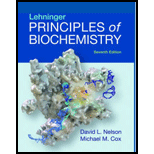
Concept explainers
(a)
To determine: The chains in the three-dimensional model correspond to the antibody fragment, and which correspond to the antigen, lysozyme.
Introduction:
Antibodies are the Y-shaped proteins which provide immunity to the body by neutralizing antigens such as bacteria and viruses. They are also known as immunoglobulins. On the other hand, an antigen is a foreign particle that induces the production of antibodies. These protein structures are the three-dimensional arrangement of atoms in a peptide chain.
(b)
To determine: The type of secondary structure that predominates in the Fab fragment.
Introduction:
An antibody is divided into two regions, Fab (antigen-binding) fragment and Fc (crystallizable) fragment. Fab fragment is a portion of an antibody molecule that binds to the antigen molecule.
(c)
To determine: The number of amino acid residues in the heavy and light chains of the Fab fragmentand also estimate the percentage of the lysozyme that interacts with the antigen binding site of the antibody fragments.
Introduction:
An antibody has a Y-shaped structure which is formed by the association of heavy and light chain. Both the chains contain an amino-terminal at the Fab portion, and a carboxy terminal at the Fc portion.
(d)
To determine: The specific amino acid residues in lysozyme and in variable regions of the Fab heavy and light chains that are situated at the antigen-antibody interface. Also determine whether the amino acid residues are contiguous in the primary sequence of the polypeptide chains.
Introduction:
Amino acid residue is the fundamental unit of a protein. Two or three amino acid residues are bonded together by peptide bond to form a peptide. A long chain of peptides called a polypeptide is linked through the peptide bonds resulting in a specific protein molecule.
Want to see the full answer?
Check out a sample textbook solution
Chapter 5 Solutions
Lehninger Principles of Biochemistry
 BiochemistryBiochemistryISBN:9781319114671Author:Lubert Stryer, Jeremy M. Berg, John L. Tymoczko, Gregory J. Gatto Jr.Publisher:W. H. Freeman
BiochemistryBiochemistryISBN:9781319114671Author:Lubert Stryer, Jeremy M. Berg, John L. Tymoczko, Gregory J. Gatto Jr.Publisher:W. H. Freeman Lehninger Principles of BiochemistryBiochemistryISBN:9781464126116Author:David L. Nelson, Michael M. CoxPublisher:W. H. Freeman
Lehninger Principles of BiochemistryBiochemistryISBN:9781464126116Author:David L. Nelson, Michael M. CoxPublisher:W. H. Freeman Fundamentals of Biochemistry: Life at the Molecul...BiochemistryISBN:9781118918401Author:Donald Voet, Judith G. Voet, Charlotte W. PrattPublisher:WILEY
Fundamentals of Biochemistry: Life at the Molecul...BiochemistryISBN:9781118918401Author:Donald Voet, Judith G. Voet, Charlotte W. PrattPublisher:WILEY BiochemistryBiochemistryISBN:9781305961135Author:Mary K. Campbell, Shawn O. Farrell, Owen M. McDougalPublisher:Cengage Learning
BiochemistryBiochemistryISBN:9781305961135Author:Mary K. Campbell, Shawn O. Farrell, Owen M. McDougalPublisher:Cengage Learning BiochemistryBiochemistryISBN:9781305577206Author:Reginald H. Garrett, Charles M. GrishamPublisher:Cengage Learning
BiochemistryBiochemistryISBN:9781305577206Author:Reginald H. Garrett, Charles M. GrishamPublisher:Cengage Learning Fundamentals of General, Organic, and Biological ...BiochemistryISBN:9780134015187Author:John E. McMurry, David S. Ballantine, Carl A. Hoeger, Virginia E. PetersonPublisher:PEARSON
Fundamentals of General, Organic, and Biological ...BiochemistryISBN:9780134015187Author:John E. McMurry, David S. Ballantine, Carl A. Hoeger, Virginia E. PetersonPublisher:PEARSON





